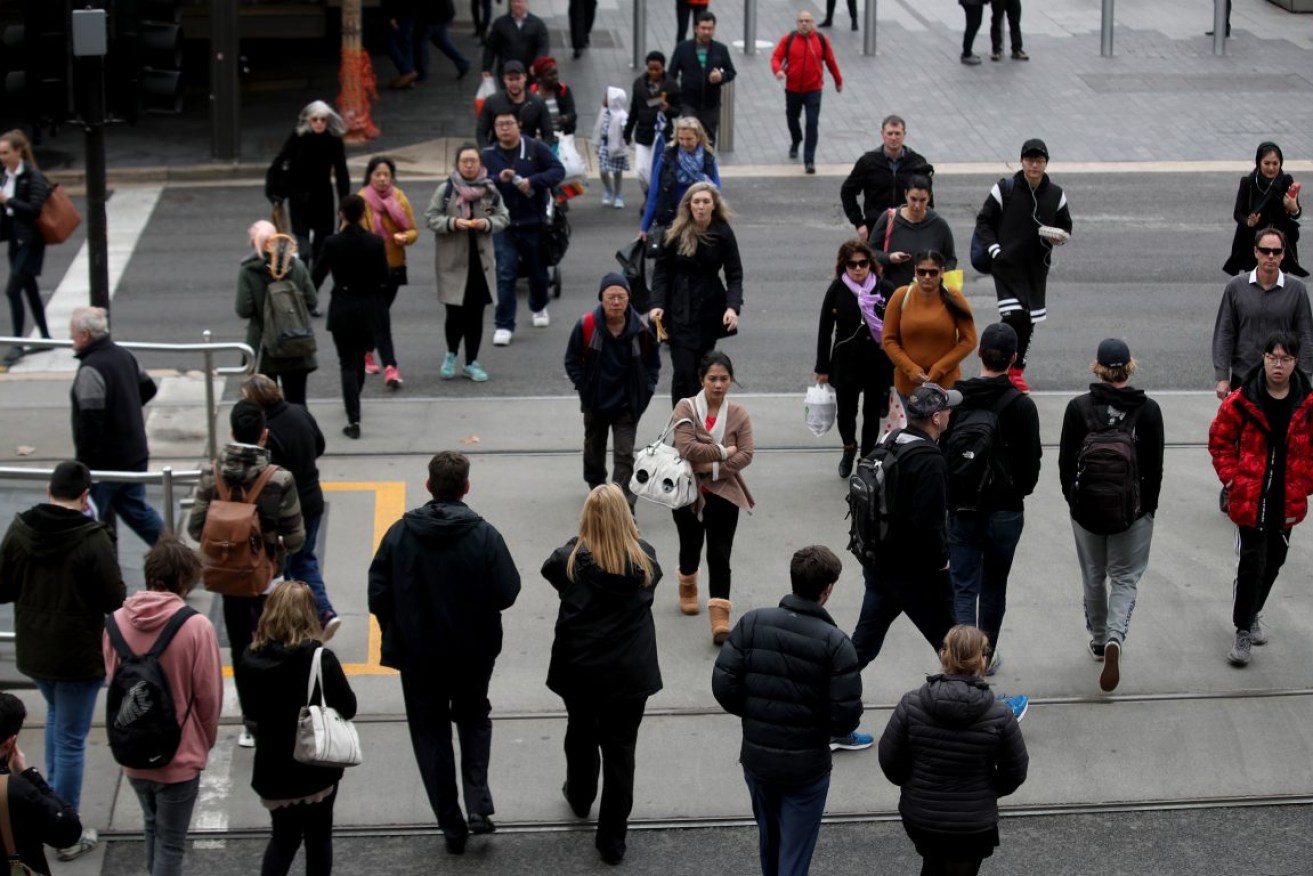Minimum wage rise debate amid inflation fears
Millions of Australians on award and minimum wages will learn how much more they will be paid today amid argument between the government and the business lobby over the impact of an increase.

Pedestrians at Rundle Mall. Photo: AAP /Kelly Barnes
The Albanese government has insisted Australia’s lowest-paid workers should not go backward, which would mean a wage rise at least in line with inflation.
Cabinet minister Jason Clare said more money in people’s pockets meant more money spent at local and small businesses as well.
“It helps the economy,” he told reporters in Canberra on Friday.
“The reason we’ve got a challenge with inflation is not because people on the lowest incomes in Australia have been paid too much, it’s just an outright lie.”
But the Australian Chamber of Commerce and Industry has warned that too high a pay rise could cut into businesses’ viability.
ACCI chief executive Andrew McKellar said a rise of around 3.5 per cent would be the right number.
“That is consistent with getting inflation under control and safeguarding the interests of small business, which are particularly vulnerable at this point in time,” he said.
He said claims big businesses were making record profits and executives enjoying large bonuses while minimum wage workers struggled were misleading.
“The reality is that in many sectors across the economy in retail, in manufacturing in construction, restaurants, cafes, hospitality, small business is struggling at the moment,” he said.
“Many of them have seen declining margins over the past two years, they’re facing much higher costs, they’re the ones that employ people on award wages.”
Economists have also warned a too-generous rise could add to pressure on the Reserve Bank to push up interest rates next week.
The Fair Work Commission will broadcast online the result of its latest wage review at 10am AEST on Friday, which is expected to impact on 2.67 million of the lowest-paid Australians.
Last year, the panel split its decision by awarding a 5.2 per cent increase to 180,000 workers on the lowest minimum wage, in line with inflation at the time.
As well, the umpire outlined an increase of $40 a week or at least 4.6 per cent for 2.6 million people on higher award rates.
With inflation at 6.8 per cent in the year to April, this would require a wage rise of at least 6.9 per cent.
Westpac economists predicted an average pay increase of 4.6 per cent, which would mean “constant or steady” rather than an increasing contribution to wage inflation.
However, ANZ experts believe there will be a seven per cent nominal increase in the national minimum wage in line with headline inflation.
“Risks around this are skewed to the downside, as the commission might seek a mid-point between submissions from unions and employers,” ANZ economists said.
“For modern award minimum wages, we expect a smaller but still substantial nominal increase of five to 5.5 per cent.”
This would lift the minimum wage to $841.04 a week, with 3.5 per cent directed to ordinary earnings and 0.5 per cent directed to the expected superannuation increase from July 1.
Peak union body the ACTU has argued for a seven per cent rise, or about $57 a week for a full-time worker on the minimum wage.
AMP chief economist Shane Oliver said there was now a “very high risk” of interest rates being hiked due to the “upside risks to wages flowing from the minimum wage increase, the still tight jobs market and faster public sector wages growth”.
The RBA meets on Tuesday to consider whether to lift the cash rate from its existing 3.85 per cent.
-with AAP




